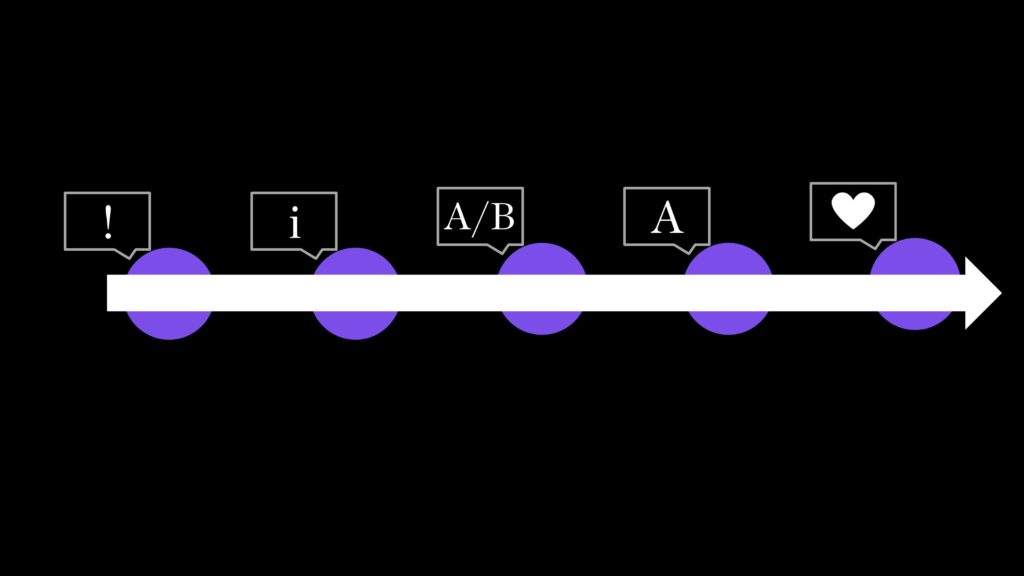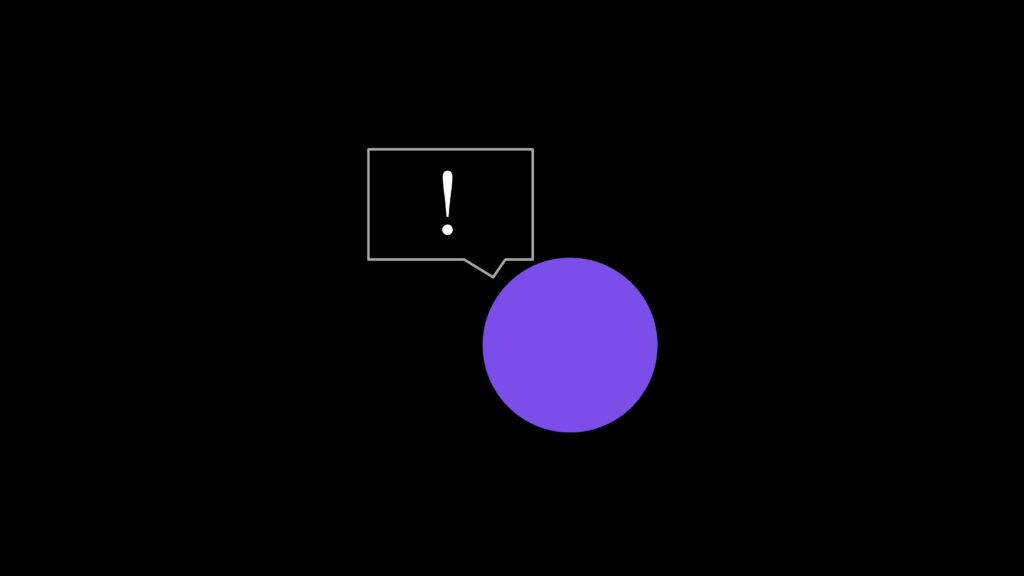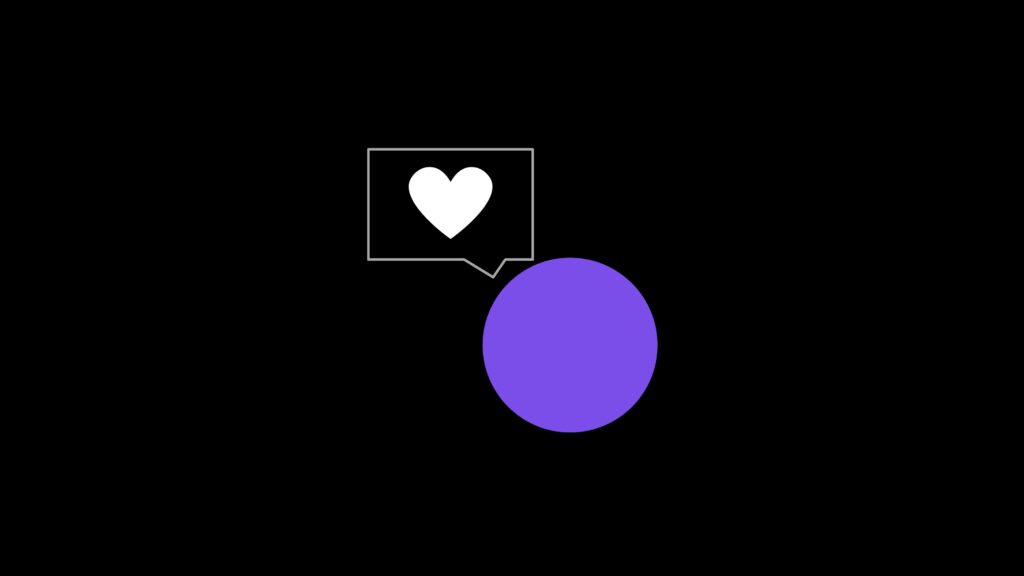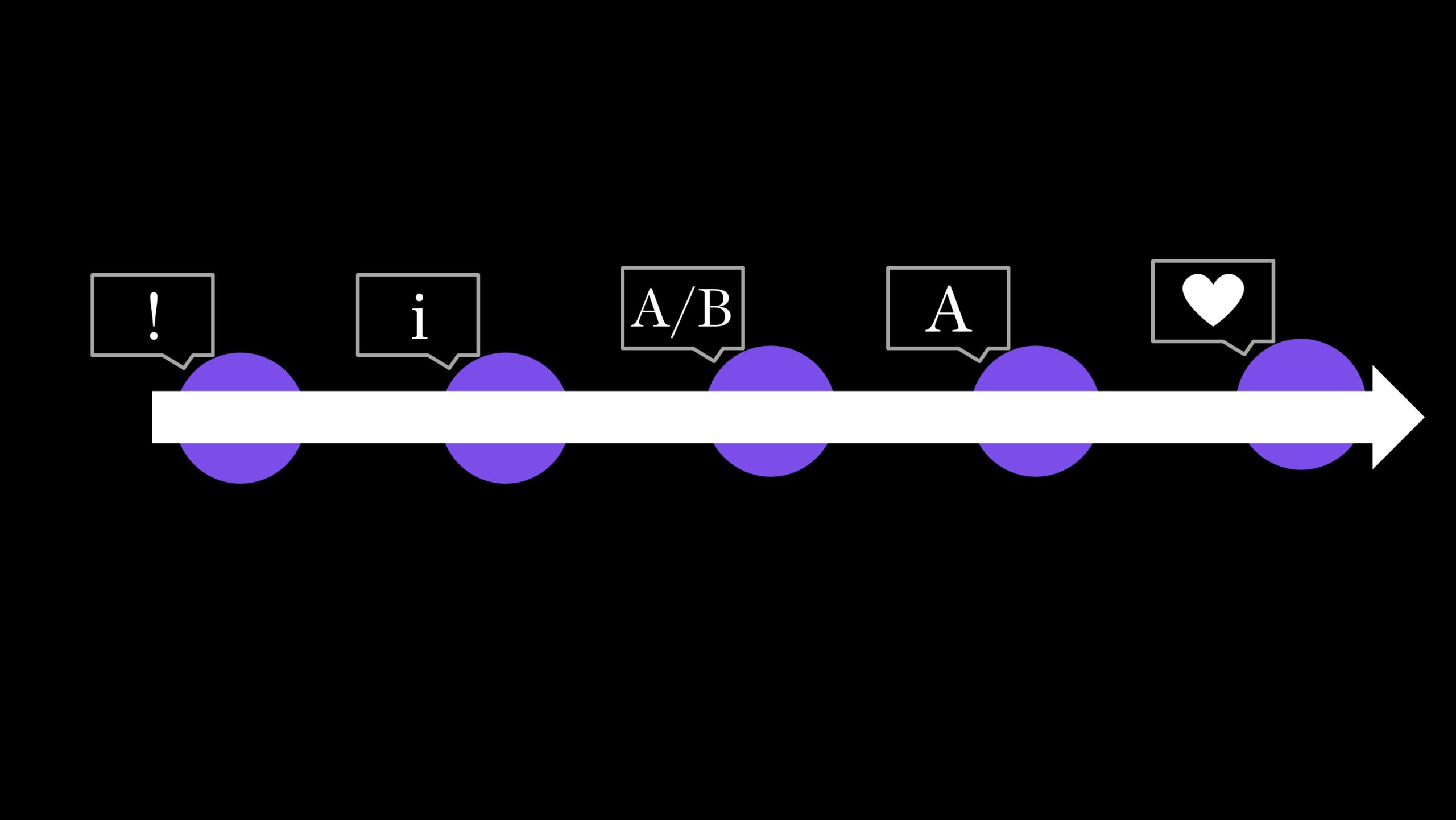Article last updated on August 16, 2021
The consumer decision making process is a complex thing, and it takes time for consumers to make purchasing decisions.
If you want your product or service to be the one that gets chosen in this process, then you need to know how consumer decision-making works.
This can help you understand what motivates consumers to buy things, so that you can craft marketing strategies accordingly.
The consumer decision-making process steps are the steps by which consumers become aware of and identify their needs.
There are five steps in this process:
- Problem recognition
- Information search
- Evaluation of alternatives
- Purchase decision
- Post-purchase behavior

The problem is that this is usually the first step in the consumer decision-making process.
The consumer then creates a need to find a solution until they are satisfied.
This process will help you think through each step a customer takes before purchasing and provide you with strategies to optimize each step.
Let’s examine each step in detail today and discuss the strategies that your company can use to change the tides.
Stage 1: Problem Or Need Recognition

A consumer will identify a problem and make sure they solve their problem until they are satisfied.
A company should make sure that their product is promising in solving the customer’s problems before entering into this stage of decision-making.
An example would be customers who are planning a vacation and need to find the best place that interests them enough.
Individuals recognize a need internally, but external influences can also stimulate these needs.
Here’s an example:
Ana enjoys drinking alcohol on weekends, but she has terrible hangovers the next morning. She didn’t believe there was a secret cure “.
While scrolling through her Facebook, she sees an advertisement offering a free Cheers sample. This vitamin supplement claims to reduce the effects of drinking and other side effects.
This advertisement made her realize that there was a solution. (Recognize External Sources)
To build trust and understanding about their products and services, businesses can use brand awareness campaigns.
Marketing Idea for Stage 1. Need Recognition
Let’s continue with Ana‘s example and the hangover remedy. Let us now look at some examples of what businesses can do during the need recognition stage.
- Make a Brand awareness campaign – Use social media to get your product/service out there as much as possible.
- YouTube video ad explaining unique features of a company.
- Blog post on how to reduce the effects of drinking.
Remember, this stage is about solving their problem. It is important to explain to them why your product/service solves their problem.
This is when a consumer realizes it the next step is to learn more about the product or service.
Which product is most suitable for me?
Is it trustworthy?
What kind of features are there?
Is this the right product for me?
Is this budget-friendly?
Are there any hidden fees that I should be aware of?
These are the questions your potential customer will ask before they move to the next stage.
Stage 2: Information Search

This is the phase where the consumer seeks more information about their needs.
This is your chance to create a great first impression with the customer.
You can use multi-channel or omni-channel approach, but the key is to attract ideal customers.
It is important that you show them how knowledgeable and trustworthy your company is during this stage of decision-making.
Your potential customers will be more inclined to do business with you if they feel comfortable following through with their purchase.
This phase provides your company with an opportunity to show them the benefits of your product.
Typical steps from customer’s perspective:
- Do a Google search (or other search engines) for the best product that solves my problem, and see what comes up in the first result. If it’s not good enough then I’ll look at other results until I find something better that suits me.
- Watch a YouTube video of the product that I’m interested in.
- Do some research about the company to see if they are credible and trustworthy with their customers.
- Ask friends what they think about it, or read reviews online before making any decisions.
This stage is when consumers will start looking for more information on your business’s website and on other reputable sources.
Again, it’s important to show your customers that you are knowledgeable and trustworthy in this stage of decision- making, because it will make them more inclined to do business with you.
This is the perfect opportunity for a company to explain their benefits as they relate specifically to solving this customer’s needs!
You, as a business, should create the best content to assist customers.
If we are to compare this to the marketing and sales funnel, this would be the stage in which you would create TOFU (top of funnel) content.
Check this article for a complete breakdown of conversion funnel – including top of funnel.
Top of funnel is used to introduce prospects and educate them about your brand.
Instead of focusing on making money or landing a sale, the content should be informative and educational.
This is because consumers are at the top of your sales funnel. They aren’t fully committed to your brand, but they are just looking for information.
Marketing Idea for Stage 2 – Information Search
Ana is now aware of Cheers’ ability to make her feel good after a night out drinking. She wants to learn more about the product to determine if it is right for her.
These are just a few of the possible situations that could arise and how the business might accommodate them.
Ana is now searching for the best hangover remedy.
She searches “hangover remedies” online and finds out there are many options available, including:
- Cheers sample
- Vitamin supplement
- Hangover pill that reduces discomfort from drinking alcohol
Ana would like to know the ingredients in these pills.
She wants to know if any strange chemicals are in the pills and if they could be potentially harmful.
She types “Google” into Google. What are the ingredients of Cheers’ hangover pill?”
Ana is still unable to believe that a vitamin supplement can relieve hangover symptoms.
She would like to see what other people have said about Cheer Restore.
She searches Google again, this time with the following query: Cheers Restore reviews”.
She is overwhelmed by the number of positive reviews and detailed information that they offer.
So far what Ana could do is:
- Do some research about the company
- Ask friends what they think about it, or read reviews online before making any decisions
- Watch a YouTube video of the product that she’s interested in.
More steps:
- Join their newsletters to get updates and promotions for your needs
- Browse through their FAQ section to learn more about the product/service
- Read the reviews in-depth to see what other customers are saying about the product
- Search on Google for coupon codes, promo codes, and discounts before buying anything online to save money
Stage 3: Alternate Evaluation

This stage is where a business must really think about what makes their product/service the best solution to a problem, and why it stands out from the rest.
This is where focused strategy can help, but keep in mind that consumers who reach the alternative evaluation stage of the consumer decision-making process are weighing multiple factors between brands, including:
- The Most Competitive Price
- The Best Customer Reviews
- Product Benefits
- Favorable Materials
- Favorable Colors & Styles
- Product availability
- Shipping Times
These are just some examples of details that can win over potential consumers to your brand during the evaluation phase.
This phase is about your brand’s uniqueness.
Consumers will select your business based on the small, unique details.
You must also make sure that you get to know your target audience well and understand what they want from your solution.
Marketing research and development will really help you know the people that you are talking to and what they want out of a product or service.
Ask yourself:
- Does your target audience favor quicker shipping over a small price difference?
- What additional features are available that can win them over?
- Do they have any special preferences?
These are just a few examples, but you get the idea.
You must find out what your target audience is looking for and cater to their needs if you want them as customers.
There’s an old saying that says “people don’t care about how much you know until they know how much you care.”
If your business can show that it cares about its customers and has an understanding of what they want, then people will be more likely to buy from you.
This is especially important for businesses with a large customer base where there are many options available.
For example, some consumers will only shop for products that are made with eco-friendly materials, while others may not care as much about the environment and just want a product that meets their needs at an affordable price.
Make sure you have all of these considerations taken into account when trying to win over customers during the evaluation stage of the consumer decision-making process.
Marketing Idea for Stage 3 – Alternative Evaluation
Ana will choose a brand with better customer reviews, even if it means she has to pay more.
She likes the idea of having more information about products before she buys them, so Ana decides to browse through their FAQ section and read some reviews in-depth.
Ana also appreciates the quick shipping times.
She is hosting a bachelorette party and needs the Cheers Restore supplements to be on time.
Consider all the details that can be used to influence a consumer to choose your brand over the competition. This stage will help the consumer make the sale.
Stage 4: Purchase Decision

The moment we all have been waiting for is finally here – the sale!
The buyer should now have all the information necessary and be able to look at other options to help them make a decision about the product or service that they want.
Once they have received all the information necessary, they will choose your brand over other brands.
The checkout process in eCommerce stores is actually one of the most neglected stages in the development of additional strategies, so optimizing your conversion funnel is a must.
Online shoppers abandon websites with items in their cart on average 72%. This is called the abandonment rate.
As a business owner, it is your responsibility to improve the abandonment rate and find ways to make checkout as simple as possible.
The checkout process should be user-friendly, have no steps that are too hard to complete and easy for the customer to understand.
Many times customers will abandon their carts because they are worried about security or a payment method – especially if it’s something new.
You can make this easier by including as much information upfront in a layout that is easy to understand.
The checkout process should also be fast so customers don’t have to wait for too long and get frustrated with the steps they need to take in order to purchase a product or service from you.
You can use Google Analytics to track your abandonment rate. GA is a powerful tool that you can use to check website traffic statistics and keep track of important metrics such as cart abandonment and check-out abandonment rates for your eCommerce store.
This stage can be used to complement products and increase order value.
Simply by offering additional suggestions, you can help drive sales.
Marketing Idea for Stage 4 – Purchase Decision
Ana wants to purchase the Cheers Restore supplement online from their website.
She becomes frustrated and leaves the online shop when she realizes that she must create an entire user account with username & password to complete the checkout process.
To correct the mistake, the business creates a “guest check out” option for future orders in order to improve customer checkout experience.
Ana returns to the online shop and is ready to complete the last purchase.
She is also purchasing a complementing product that she can use as a daily supplement to her healthy liver.
Even better, both products can be combined for a 20% discount! She couldn’t possibly say no!
The final step in the buyer journey is optimized to make Ana an expert.
Advocate for the brand. Get her involved in the future.
Stage 5: Post Purchase

Your brand’s success depends on having loyal customers and high customer lifetime value.
These customers will provide consistent revenue every month, which will allow you to grow and generate cash flow to acquire new customers.
Just ask yourself:
- How many products and services have you experienced that went above and beyond what you expected?
- Are they available to assist customers at any time?
- Are you eligible for discounts when you are a loyal customer?
- Do they have a rewards program that gives you points for every online purchase?
These are just a few of the many questions you need to ask yourself when optimizing your post-purchase behavior.
If you want a complete breakdown of post-purchase behavior, I have create an in-depth article about it.
For businesses, it’s all about making customers happy.
If you spend an extra dollar on a customer, and they are content with the service, then your business will last longer than other competitors who don’t invest in their clients’ satisfaction or happiness.
This is the most important stage. It’s the time when customers are deciding if they will come back to shop with you again or not.
Your post-purchase behavior really needs to be top-notch so that your customer can have a positive experience and feel satisfied from their purchase.
Post Purchase Behavior Goals:
- Making sure your clients feel valued, no matter what service they are receiving
- Giving them a reason to come back and shop with you again in the future
- Achieving a high customer lifetime value so that your business can grow
How to make them so incredibly happy that they are happy to tell their friends and relatives about their purchase? What is the best way to do it?
Marketing Ideas for Stage 5 – Post-purchase
Ana was delighted to receive her package in rapid time through expedited shipping.
The simple act of adding something extra and unexpected to a customer’s order would get them excited about the business.
Who doesn’t like free swag? That way you have a potential for a customer who is going to tell their friends and family about the brand.
Ana signed up for the newsletter after she purchased the product.
She is now eligible to be part of the weekly email series that offers her exclusive “insider deals” for future purchases that are not open to the public.
She can also be invited to join an “online reward program”, which gives her discounts on future purchases.
Ana is concerned about a strange smell coming from her pills.
She calls the business to confirm that it is normal.
The business’s staff responds to the phone with knowledgeable and friendly staff members who are more than happy to chat and answer any questions.
They don’t leave her on hold and do not force her to search the internet for contact information.
This is an example of how a business owner can increase the value of customers after a purchase.
Make the customer feel valued and part of your brand.
This will increase their engagement and keep them coming back for more.
This is what will make your customers loyal and provide long-term value for your brand.
Consumer Decision Making Potential Risks
During stage five (post-purchase), there are a few pitfalls or risk factors that can befall your business.
The customer may feel unsatisfied for any number of reasons:
- The product didn’t work as expected or it did not meet their expectations due to the lack of information they had before purchasing the product.
- They don’t have enough points in an online rewards program and can’t get the product that they wanted for free.
- They have a bad customer experience or their complaint was not responded to in a timely manner by your company’s staff.
All of these will, unfortunately, lead to an unhappy customer who may never return – even if you make it right with them after the fact.
How to minimize these risks?
It’s all about customer service and satisfaction.
You need people on your staff who are knowledgeable, kind, patient, helpful – even when things go wrong. You want to minimize financial risk and shopping risk.
Be quick with responses so that the customer is not left waiting for a long time before getting an answer.
After a purchase, the customer should feel like they are being taken care of and that you genuinely want to hear what is wrong or what needs improvement.
You also need to make sure that steps are in place for handling complaints so that customers don’t have to wait around for days before getting an answer.
If you want your customers to return for more purchases in the future, then provide them with a great experience when they purchase from you – and make sure they know how much their opinion means to you.
The best way of doing this is to listen and respond.
They will be more than happy to share their opinion with you, if they feel like they are being listened to.
Importance of pricing in the consumer buying process
One frequently asked question by eCommerce owners is how consumers consider price when making purchasing decisions.
In customer journey, the price is, of course, a major consideration for consumers when considering a product.
However, it is not just about the product price; it is also about the total cost of the transaction.
You don’t want customers to be startled by hidden fees at the checkout.
Make careful to factor in taxes and delivery charges before proceeding to the last stage.
The more upfront you can be about your pricing, the more likely you are to close the transaction.
If you want to convert a potential customer into a devoted brand advocate, you must first establish trust and keep them involved throughout the process.
User-generated content is an effective strategy for increasing brand awareness, emphasizing the best features of your products, and, eventually, increasing your bottom line.
The importance of pricing in the consumer buying process depends on many variables. The most significant variable is how far supply exceeds demand.
When supply exceeds demand, competition for customers drives prices down to a level that maximizes the number of units sold while still attracting enough revenue from each sale to make up for expenses and profit margins at that lower price.
Thus, on any given day or time period, there may be some quantity being sold at what we think is a “fair” price (the equilibrium price where buyers are indifferent between more expensive options and cheaper alternatives) but plenty will be available because there is also still an excess of it offered by competitors who can sell it cheaper than our fair priced unit if they offer variants like more customized designs, higher quality materials, more brand endorsements, etc.
You will always have pressures from one end of the spectrum or the other and sometimes both ends at once.
So, you are never in an equilibrium situation but rather a blizzard where the winds blow from price discounts (push) and increased marketing spend (pull).
Your job is to aim for drifting in the direction of maximizing your revenues while not sacrificing too much margin to get there.
The price sensitivity
The price sensitivity of potential customers depends on how desperate they are for what you’re selling, and this varies widely.
The lower the cost of switching to a competing product or service (or setting up an alternative that doesn’t involve any transaction cost at all), the less you can charge before losing all your customers.
Building on the previous point, price sensitivity varies by product category and also generally differs between goods and services.
Consumers are more willing to pay higher prices for goods than for services because they have no alternatives but must pay the full cost of acquiring or producing those goods themselves.
You get what it takes to acquire the good even if they can’t or won’t do it themselves.
In consumer markets, price sensitivity is generally lower for durable goods that require a significant transaction cost to replace than for consumable goods that can be re-purchased at a lower cost and without any investment in setup.
Price sensitivity depends on how easy it is to get information about the price.
For example, a computer is an expensive good so consumers need to be confident they are getting good value, while there is little cost in acquiring that knowledge for very cheap consumable goods like food or clothing.
Lowering prices does not always have the desired effect of boosting sales because people may simply assume that lower prices indicate lower quality.
Price differentiation involves charging different prices to different customers based on the customer’s willingness or ability to pay.
Differentiation is a way of narrowing the market for your product (i.e., going after specific niche markets) but it can also be a very effective marketing strategy in cases where there are many buyers who want exactly what you are offering (or very little variation in what they want).
If you don’t have the ability to differentiate between your potential buyers, it may be better to reduce prices for everyone (so as not to appear that some customers are better than others) and make revenue targets by selling more units rather than charging higher prices to those who will pay them.
Shortcut To Fast Buying Decision
Shortcut to a fast buying decision is only possible with impulsive buying behavior.
If your consumer is not impulsive buyer they will shop around and compare offers.
To utilize impulsive buying behavior, you need to have a good understanding of your consumer’s buying process.
Understand the steps in which online consumers take before making purchase decisions.
Know what motivates them (both consciously and unconsciously). When people make impulsive buying decisions, they are not thinking about the consequences beforehand.
This is when you can offer them a deal or coupon code to purchase your product.
It’s all about creating urgency, and getting that person in “the moment” so they don’t have time to think about whether it would be cheaper elsewhere.
You will need to create an effective marketing campaign. The goal of these campaigns should be building trust by showing consumers how they can get more for less if they purchase your product over one from a competitor.
How to re-engage consumer and have them as repeated buyer
There’s something called involvement buying behavior, which is when consumers are focused on their level of involvement with your business.
Consumers who exhibit these online buying decisions have a high degree of loyalty and attachment to the company and its products.
They will purchase from you no matter what, even if they would prefer goods or services that cost less than yours do.
To tap into these customers’ enthusiasm for your brand, you will want to provide them with more involvement in the company.
This is done by allowing them access to exclusive deals only available for online consumers who are involved – such as discounts that can’t be found anywhere else and coupons for products they may not have seen before.
The more your customers feel like insiders, the less likely they will be to be lured away by the competition.
This is the key to customer retention.
The steps are:
- Gather a list of your competitors with contact information, including their social media channels
- Conduct competitive analysis on these companies and start building rapport with them by following or mentioning them in posts
- Maintain consistency across social media channels by creating a tone of voice that is consistent with the messaging
- Collect feedback from your followers on what they want to see more of and respond appropriately
- Use a variety of tactics such as contests, giveaways, exclusive deals for insiders (involvement buying behavior) in order to provide value to your customers
- Continuously run campaigns and test different tactics. This is the best way of figuring out what works for you, as well as what doesn’t work.
Questions About Consumer Decision Making Process:
What is the difference between a purchase and repurchase behavior?
Post-purchase evaluation (re-purchase): After making a purchase, consumers consider whether it was worth it, whether they will recommend the product/service/brand to others, whether they would buy again, and what feedback they would give.
The consumer may also compare their purchase with those of similar products and make a choice.
As for me, I consider that the repurchase behavior can be considered as a post-purchase evaluation process, but not the purchase behavior.
Because it is possible for the consumers to evaluate if their product was worth it even before purchasing it through research such as promotions, commercials and recommendation of other people.
Whereas the purchase behavior takes place after consumers have been persuaded by marketing tools to take action.
In this sense, I consider that the repurchase behavior can be considered as a post-purchase evaluation process because they do not require any further action from the consumer in order to get valuable information about their purchase.
During all their life cycle, products and services are influenced by different factors such as price changes, competitors’ actions or even consumers expectations.
Consequently, it is possible that the final decision to repurchase may be different from the initial one.
Therefore, this behavior can be considered as a dynamic process rather than a passive process.
What are some easy ways to better understand my customers and their behavior?
Putting yourself in the customer’s shoes is one of the best ways to learn how they think and what makes them tick.
Using these three ways, you can analyze their decision-making process from start to finish while also refining your brand marketing tactics to make sure that every dollar spent on advertising pays off with an increased volume or revenue for a long time!
These three ways are:
1) Customer Satisfaction Surveys: This one is pretty self-explanatory but sometimes companies may not know that they need to send out surveys after each interaction or customer experience.
The idea here is that you track satisfaction from the very first point of contact or interaction (if it’s a digital company) until the final product and/or service has been delivered.
It could be something as simple as a “like” on Facebook or follow on Twitter to when someone signs up for your newsletter, leaves a comment on your blog, reaches out via email, etc.
It’s important to note here that these aren’t just “checkboxes”…the survey itself should actually ask questions about how the customer felt at each stage and what they are thinking now that their journey with your brand is complete.
Surveys are always great if you want feedback but they can also help you fine-tune your advertising strategies as well.
If you are selling a product that costs less than $20 then surveys may not be worth your time but for more expensive products and/or higher ticket items – it’s an absolute must!
2) The Five Whys Technique (root cause analysis): This is a pretty simple technique to understand…but it can be difficult when you’re dealing with a complex problem or issue.
The idea here is to keep asking yourself why something happened, what caused that thing to happen, what caused the cause of the first thing, etc. until you get down to the root cause of the problem itself.
The goal here is not only to find out how things went wrong in the first place but also how you can avoid them from going wrong again in the future.
Example: If you had a sale and only 30% of people who visited your site ended up making a purchase, then the asking of “why only 30%” would result in another question like “because they were not interested”…which is why you’d ask “why weren’t they interested”.
This could end with responses such as…
- People were on mobile devices instead of desktops
- Some visitors couldn’t find the add to cart button
- The site was slow to load
Keep doing this until you reach what we call the root cause; which is where all other causes originated from.
It’s really important that when working through these types of questions that you take your time with them – just click pause and ask yourself the rest of these questions before moving on to the next one.
Ignoring “why” statements and getting straight to a solution will only lead to things getting worse in the future!
Tip: When doing this type of analysis, make sure to write down anything that looks like it might be a factor or even an issue that may be causing problems (even if they don’t seem important at first).
Oftentimes we miss some very common factors when solving complex issues such as this so never leave something out because it seems unimportant.
3) Pareto Analysis or the 80/20 Rule: This is a very common strategy used by many businesses to help find the most important factors in their business.
The idea behind this is not only something that you can use to eliminate things like unimportant and irrelevant information but it’s also a great way to see what your most profitable products, services or lines of business are.
Let’s say you own a grocery store for example…and you want to know which products to focus on stocking (they’re referred to as focusing items).
What you could do here is track sales on everything over time and then narrow it down until you get down to just 20% – these will be the products where 80% of your profits came from. In other words, the point here is to find out what 20% of the things you do are generating 80% of your business.
Example: Let’s say that we sold 100 items in a month…and our top 10 (most important) items produced $40,000 in revenue while everything else combined only produced $10,000 in revenue.
This means that $30,000 worth of items only accounted for 10% of our total sales – but still produced 60% (or 6 out of 10) full-time employees and kept the lights on!
The choice here is clear…if you want to increase profits then focus all your efforts around those top 10 products and make sure they continue to be available for customers (this will help when doing any type of analysis in the future).
Tip: While it might be tempting to ignore the other products or services that are not as profitable as others…don’t!
By ignoring these things you may be missing a huge opportunity for growth (for example, customers who like your 20% most profitable items may also like your 10% least profitable ones).
One way we create massive profit at a lot of our sites is by providing people with multiple options and levels of service.
The key here is to make each one valuable but also have at least a couple different levels within each group – this will help users get what they both want and need while also allowing you to generate more revenue at the same time.
Conclusion
Now being equipped with the knowledge how these five stages work together, I hope you have gained some insights into how to improve your 5 stages of purchase decision process.
Just remember, when you don’t know which stage needs improvement, step into shoes of your customers. How do they feel, what do they want, go through the process that they would go through.
This way you’ll get better understanding about where exactly your target audience is stuck at.
Hope this article helped you! If yes, please share it with others who might find it useful.


